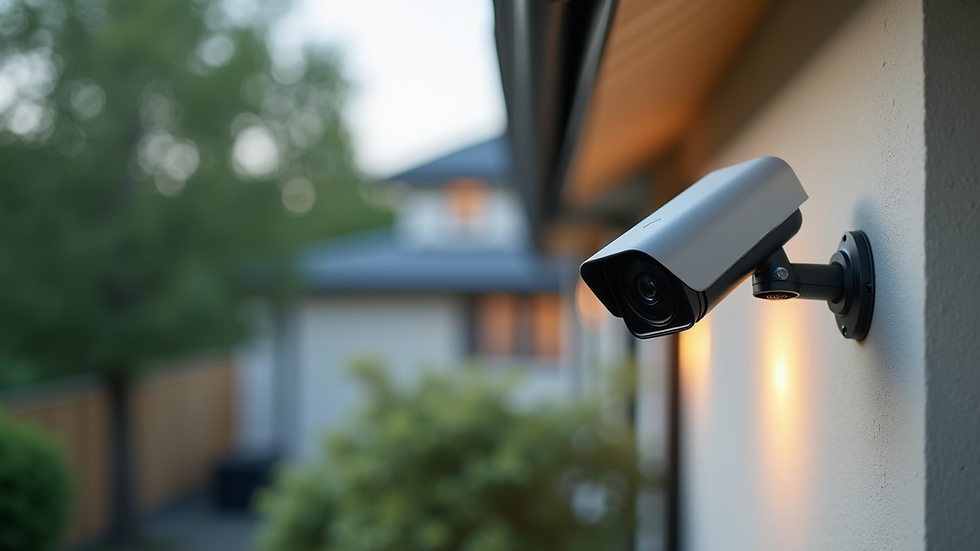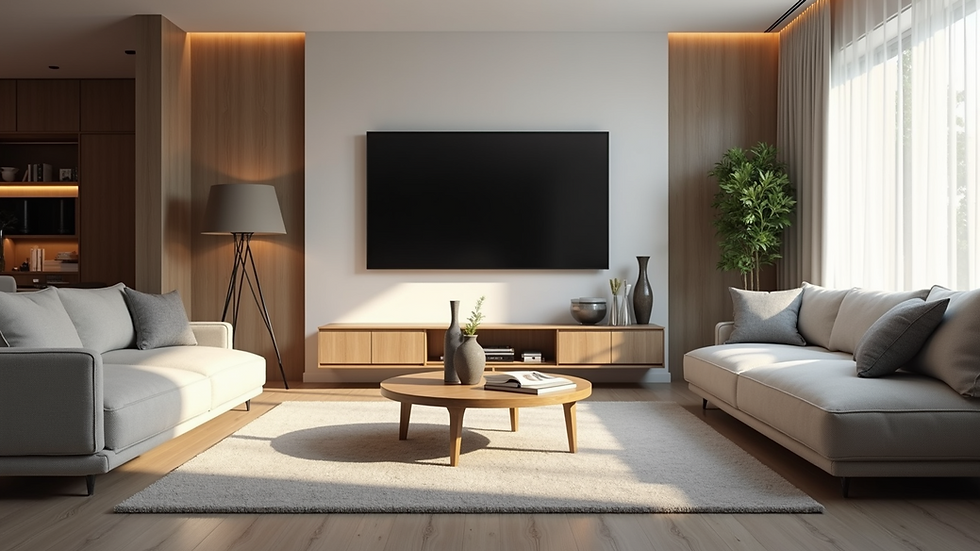Enhance Your Home Security with Smart Camera Installation
- Connect IT
- Aug 4
- 5 min read
In today's world, home security is more important than ever. With rising crime rates and increasing concerns about safety, many homeowners are turning to smart technology to protect their homes. One of the most effective ways to enhance your home security is through the installation of smart cameras. These devices not only provide peace of mind but also offer a range of features that can help you monitor your property effectively.
In this blog post, we will explore the benefits of smart camera installation, the different types available, and practical tips for setting them up. By the end, you will have a clear understanding of how to enhance your home security with smart cameras.
Why Choose Smart Cameras?
Smart cameras offer several advantages over traditional security systems. Here are some key benefits:
Remote Monitoring: With smart cameras, you can monitor your home from anywhere using your smartphone or tablet. This feature allows you to keep an eye on your property while you are at work, on vacation, or even just in another room.
Real-Time Alerts: Many smart cameras come with motion detection technology. This means you will receive instant alerts on your phone if any movement is detected. This feature can help you respond quickly to potential threats.
High-Quality Video: Smart cameras often provide high-definition video quality, allowing you to see details clearly. Some models even offer night vision, ensuring you can monitor your home even in low-light conditions.
Two-Way Audio: Some smart cameras come equipped with two-way audio, enabling you to communicate with anyone on your property. This feature can be useful for greeting visitors or deterring intruders.
Integration with Other Smart Devices: Smart cameras can often be integrated with other smart home devices, such as alarms and smart locks. This creates a comprehensive security system that can be controlled from a single app.
Types of Smart Cameras
When it comes to smart cameras, there are several types to choose from. Understanding the differences can help you select the best option for your home.
Indoor Cameras
Indoor cameras are designed for monitoring the inside of your home. They are typically smaller and can be placed on shelves, tables, or mounted on walls. Some popular features include:
Pan and Tilt Functionality: This allows you to adjust the camera's view remotely, covering a larger area.
Privacy Modes: Many indoor cameras offer privacy features, such as the ability to turn off the camera when you are home.
Outdoor Cameras
Outdoor cameras are built to withstand the elements. They are usually weatherproof and have features tailored for outdoor use, such as:
Wide-Angle Lenses: These cameras can capture a broader view of your property.
Enhanced Night Vision: Outdoor cameras often have better night vision capabilities to monitor your home after dark.
Doorbell Cameras
Doorbell cameras combine the functionality of a doorbell with a security camera. They allow you to see and communicate with visitors at your door. Key features include:
Motion Detection: You will receive alerts when someone approaches your door.
Video Recording: Many doorbell cameras record video footage, which can be useful for identifying visitors or intruders.
Wireless vs. Wired Cameras
When choosing smart cameras, you will also need to decide between wireless and wired options.
Wireless Cameras: These cameras are easy to install and can be placed anywhere within range of your Wi-Fi network. They are ideal for renters or those who want flexibility in camera placement.
Wired Cameras: Wired cameras typically offer more reliable connections and may not require battery changes. However, installation can be more complex, as it involves running cables.
Setting Up Your Smart Cameras
Once you have chosen the right smart cameras for your home, it is time to set them up. Here are some practical tips to ensure a successful installation:
1. Choose the Right Locations
Before installing your cameras, take some time to plan their locations. Consider the following:
Entry Points: Place cameras near doors and windows to monitor potential entry points.
High Traffic Areas: Install cameras in areas where people frequently pass, such as hallways or living rooms.
Outdoor Coverage: Ensure outdoor cameras cover driveways, backyards, and any other vulnerable areas.
2. Follow Manufacturer Instructions
Each smart camera will come with specific installation instructions. Be sure to follow these carefully to ensure proper setup.
3. Connect to Wi-Fi
Most smart cameras require a Wi-Fi connection to function. Make sure your Wi-Fi signal is strong in the areas where you plan to install the cameras. If necessary, consider using Wi-Fi extenders to boost the signal.
4. Test the Cameras
After installation, test each camera to ensure it is functioning correctly. Check the video quality, motion detection, and any other features you plan to use.
5. Set Up Notifications
Configure your camera settings to receive alerts on your smartphone. This will help you stay informed about any activity around your home.
Maintaining Your Smart Cameras
To ensure your smart cameras continue to function effectively, regular maintenance is essential. Here are some tips:
Clean the Lenses: Dust and dirt can obstruct the camera's view. Regularly clean the lenses to maintain clear video quality.
Check for Software Updates: Manufacturers often release updates to improve performance and security. Make sure your cameras are running the latest software.
Test the System Periodically: Regularly test your cameras to ensure they are working correctly. This includes checking video quality and motion detection.
Enhancing Security with Additional Features
Many smart cameras come with additional features that can further enhance your home security. Here are a few to consider:
Cloud Storage
Some smart cameras offer cloud storage options for recorded footage. This feature allows you to access past recordings even if the camera is damaged or stolen.
Smart Home Integration
Consider integrating your smart cameras with other smart home devices. For example, you can set up your cameras to trigger alarms or smart lights when motion is detected.
Facial Recognition
Some advanced smart cameras come with facial recognition technology. This feature can help you identify familiar faces and alert you to unknown individuals.
Real-Life Examples of Smart Camera Benefits
To illustrate the effectiveness of smart cameras, here are a few real-life scenarios:
Package Theft Prevention: A homeowner installed a doorbell camera after experiencing package theft. The camera captured footage of the thief, leading to their identification and arrest.
Monitoring Pets: A family used indoor cameras to monitor their pets while at work. They were able to ensure their pets were safe and even interacted with them through the two-way audio feature.
Vacation Security: A couple installed outdoor cameras before going on vacation. They received alerts when motion was detected, allowing them to monitor their home remotely and ensure everything was secure.
The Future of Home Security
As technology continues to advance, the future of home security looks promising. Smart cameras are becoming more sophisticated, with features like artificial intelligence and enhanced connectivity.
Homeowners can expect even more integration with smart home systems, making it easier to manage security from a single platform.
Final Thoughts
Enhancing your home security with smart camera installation is a smart investment. With the ability to monitor your property remotely, receive real-time alerts, and access high-quality video footage, you can protect your home and loved ones more effectively.
By choosing the right cameras, setting them up properly, and maintaining them regularly, you can enjoy peace of mind knowing your home is secure.

As you consider your options, remember that the best security system is one that fits your specific needs and lifestyle. Take the time to research and choose the right smart cameras for your home, and you will be well on your way to a safer living environment.


Comments